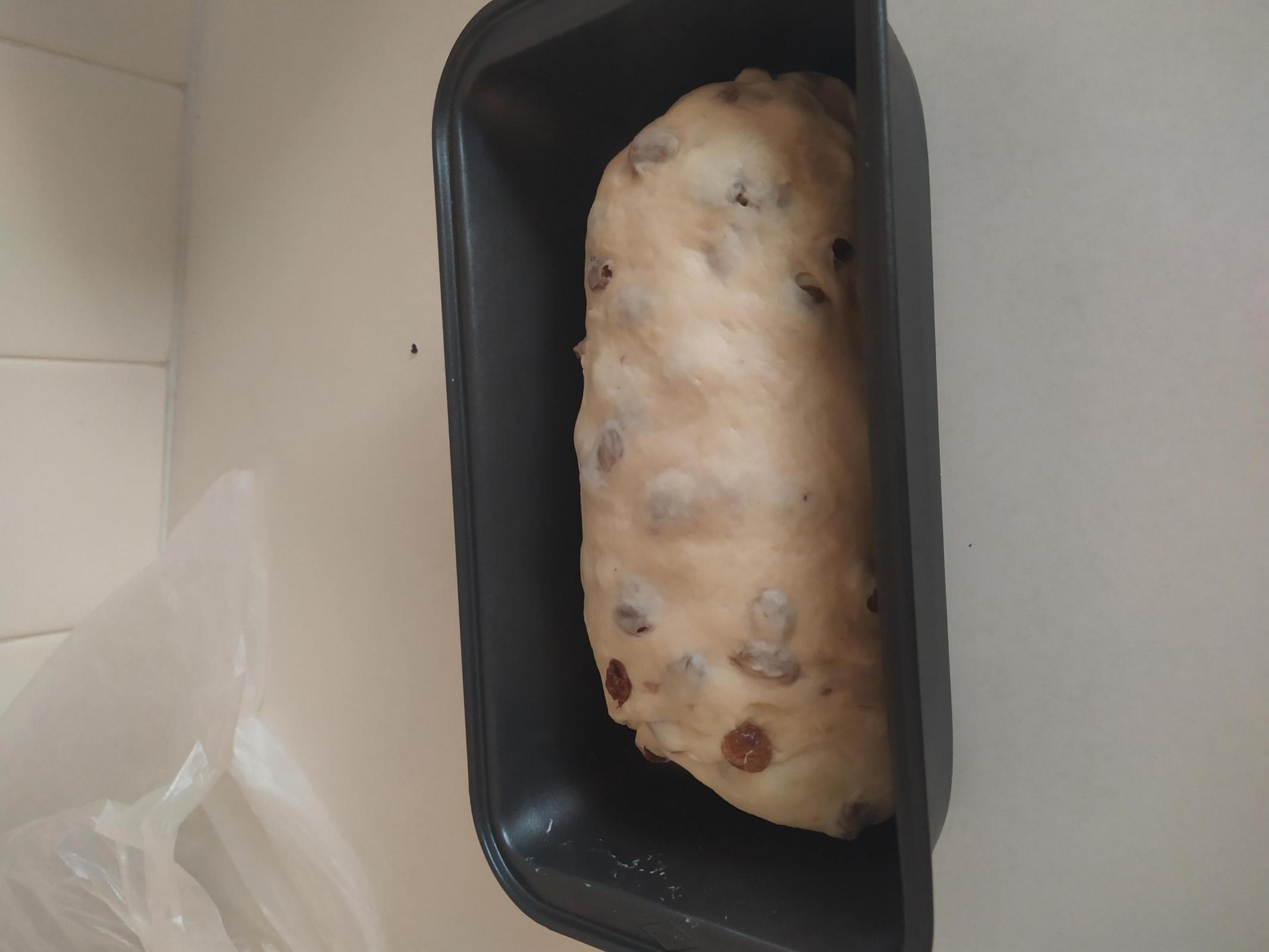Hi
I've been trying to get into bread making for a while but more often than not I seem to have issues with dense loaves. I've recently tried to make a fruit loaf using the below recipe. I've made it successfully before so I know it's possible, but the ratio of good bakes to bad bakes is pretty shocking which can be a bit disheartening. Does anyone have any tips? I feel like I might be messing up on the proofing (too long on first and second proof?) but I'm not completely sure and I haven't been able to fix the issue regardless. Any help is appreciated. I really want to be able to make a fluffy crumb loaf so I can start properly exploring what else the bread baking world has to offer
-
Old-fashioned Raisin Bread
- halved ingredients to make one loaf. All ingredients weighed. Tin size: 23.5 x 13 x 7cm (9.3 x 5.1 x 2.8 in)
1 cup/225 grams room temperature tap water
3 teaspoons/10 grams fine granulated active dry or instant yeast
1 cup/225 grams whole milk
5 cups/675 grams unbleached bread flour
1/3 cup/70 grams sugar
1 1/2 teaspoons/10 grams fine sea salt
4 tablespoons/55 grams unsalted butter, cut into 10 pieces and softened
300 grams dark raisins
----
Windowpane:

First rise - before/after:


Second rise - before/after:


Sad flat loaf:

What is your process to make this bread? the window pane looks a bit dry and it is torn.
Do you soak your raisins before using? when did you mix the raisins and the butter into the dough?
how long are you proofing the dough and at what temperature?
Have you tried Autolysing the water and flour for 30-60mins? *Autolysing is a fancy word for mixing the water and wheat and letting it sit, prior to incorporating the other ingredients.
Here is a video that picks up at the comparison between an Autolysed loaf and Non-Autolysed loaf.
Steam is another factor in oven spring. The best technique I have seen is saturating a towel (in a pan) with boiling water and placing that in the bottom of the oven when you begin your bake.
Hope this helps! Let us know what you figure out.
https://youtu.be/XIaAQRJW9n8?t=159
https://www.kingarthurflour.com/blog/2017/09/29/using-the-autolyse-method
Even though the window pane is torn, gluten development doesnt looks bad. This is an enriched dough. the bulk rise looks decent. not sure that it's doubled. but there seems to be zero spring in the oven. I'm guessing either it's over proofed or it's a heating issue.
Oven was preheated to what temperature?
Thanks for the responses, I appreciate the help
I didn't do an autolyse for making the dough. I mixed all the ingredients minus the raisins until I got the gluten developed to the stage I was after. I then incorporated the raisins. I did a mini soak of the raisins (~15min), draining them well before adding them. I might try a longer soak next time though since they still felt a little too dehydrated
The window pane wasn't torn from stretching it, I poked a hole for the photo because I thought the smoothness/roughness of the edges might help with identifying issues with kneading (there was a thread I read on this forum a while ago which went through this but I can't seem to find it atm). Sorry for the confusion!
I tried to get the bulk rise just under double because I didnt want to exhaust the yeast too much before the second rise and then final oven spring. Is there a general rule in terms of when to stop bulk and second rises?
For proofing since it's quite cold where I am, I warmed the oven and then put the dough in until it rose to just under double for the first rise and above the rim for the second. I didn't really go by time and I didn't measure the proofing temperature
The oven was preheated to 190/200 and then when the bread was put in, decreased to 180